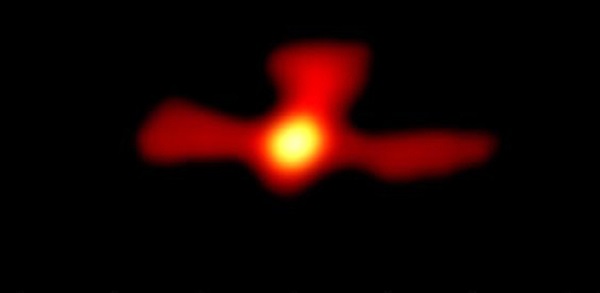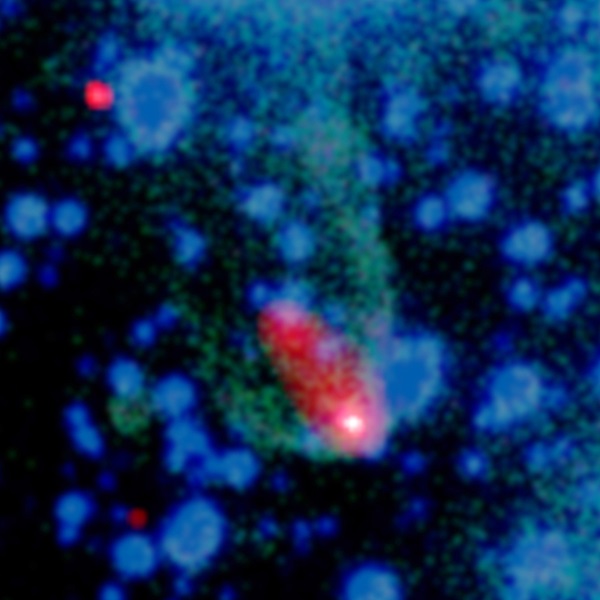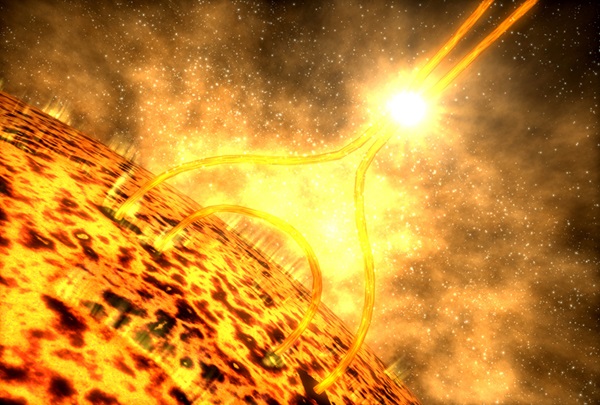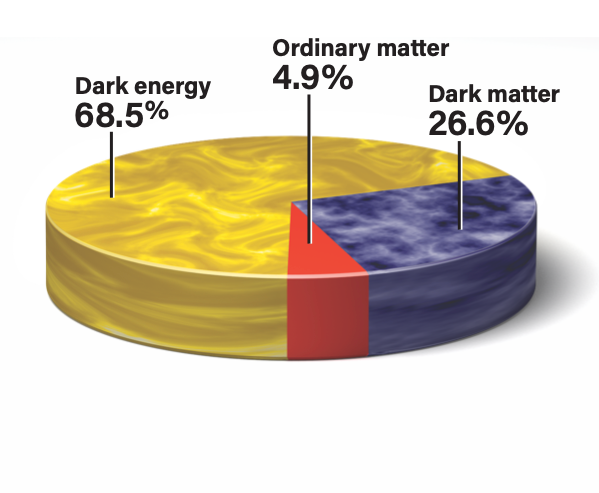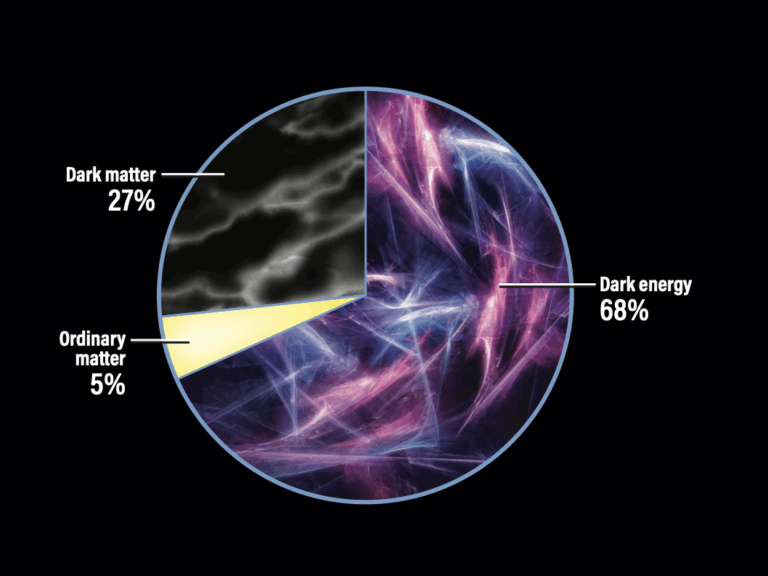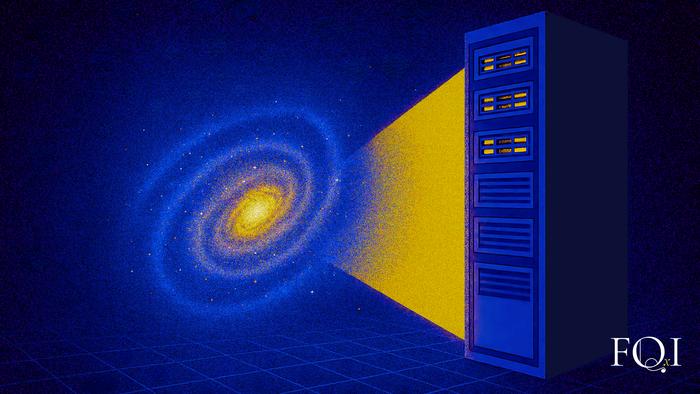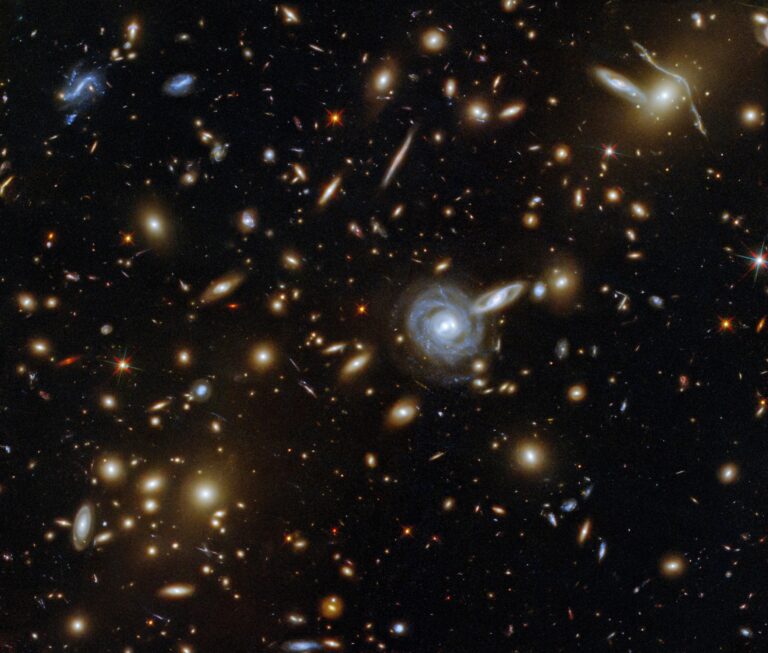Key Takeaways:
In the earliest days of the universe, shortly after the Big Bang, the cosmos was awash in particles. Not all of them were normal particles of matter, however. Corresponding with each type of particle is an antiparticle with the same mass and spin.
The nature of our universe results from the fact that matter exists in slightly more quantity than antimatter. The difference is slight, however: For every billion particles of antimatter, there must have been a billion and one particles of matter in the early universe. Everything that exists — galaxies, stars, planets, trees, people — owes its existence to the slight surplus of matter.

Bringing the universe to your door. We’re excited to announce Astronomy magazine’s new Space and Beyond subscription box – a quarterly adventure, curated with an astronomy-themed collection in every box. Learn More >>.
The question of why antimatter exists and why matter is slightly more abundant dates to 1928, when British physicist Paul Dirac described the behavior of electrons. Dirac worked with quantum mechanics and relativity and worked out an equation governing how electrons should interact with other particles. Dirac’s equation predicted that for every electron, there should be a corresponding antiparticle with the same mass but otherwise is a mirror image of the original.
In 1932, American physicist Carl D. Anderson observed a particle track, caused by a cosmic ray, that appeared to be “something positively charged, and with the same mass as an electron.” Following a year’s worth of experiments, Anderson determined anti-electrons exist, dubbed them positrons, and won the Nobel Prize in physics for the effort.
Twenty years later, physicists discovered antiprotons and antineutrons while conducting experiments with the Bevatron particle accelerator at the University of California, Berkeley. In 1968, scientists first produced anti-atoms, and in 1995, near Geneva, Switzerland, physicists created antihydrogen atoms that lasted long enough for scientists to study their behavior.
These experiments still do not enable astronomers to explain the asymmetry of matter to antimatter. Other important physics experiments with particle colliders and other methods are planned for the future. How could matter now be so dominant? One idea is that primordial black holes, which formed in the infant universe, may have evaporated and thus thrown the symmetry askew. Another group of physicists believes the asymmetry lies in the category of particles called leptons, which includes neutrinos and muons.
Neutrinos seem to be the leading culprit. Austrian physicist Wolfgang Pauli developed the idea of neutrinos in 1930 when he was desperately searching for an explanation of the process called beta decay.
In beta decay, a neutron disintegrates into a proton and an electron plus something else — the neutrino. Because neutrinos interact minimally with other matter, they are very difficult to diagnose.
Countless numbers of neutrinos produced within the Sun’s core pass through us every second. A number of physicists believe heavy neutrinos existed in the early universe that might have decayed, tipping the scales far toward matter.
Whatever the reason for such a small quantity of antimatter in today’s universe, it is out there. Tiny quantities of antimatter rain down from cosmic rays and are quickly evaporated by interactions with matter.
Anywhere high-energy collisions take place, antimatter is sure to be there. The powerful black hole in the center of the Milky Way produces an antimatter jet. The boundary where the antimatter collides with normal matter produces gamma rays.
Antiparticles get made where the temperature is extremely high — for example, the event horizon of a black hole. Should we ever get to the point of traveling deep into space, hazards from antimatter, which annihilates matter when the two collide — would pose a real and somewhat unpredictable hazard.

